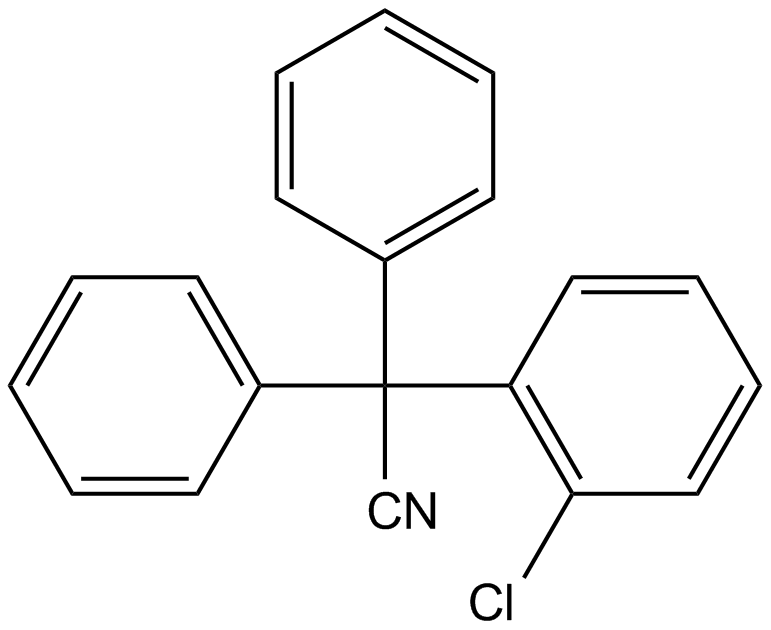TRAM 39 |
| Catalog No.GC15323 |
Potent KCa3.1 blocker
Products are for research use only. Not for human use. We do not sell to patients.

Cas No.: 197525-99-8
Sample solution is provided at 25 µL, 10mM.
TRAM-39, 2-(2-chlorophenyl)-2, 2-diphenyl acetonitrile, is a potent, synthetic, selective inhibitor of intermediate-conductance Ca2+-activated K+channels. TRAM-39 selectively block K-Ca3 but do not inhibit other Ca2+-activated K+channels.[1,3]
Intermediate conductance Ca2-activated K channels are the product of the IKCa1 genes and are important in regulating the membrane potential of colonic epithelial cells, and lymphocytes. The IKCa1 gene is also important in volume regulation of red blood cells. IKCa1 modulates the paneth cell alpha-defensin secretion and involve in the mucosal defense of the intestinal epithelium against ingested bacterial pathogens.[1,2]
TRAM-39 inhibits the Kca3,so as to Inhibit paneth cell secretion stimulated by bacteria or bacterial lipopolysaccharide. Endothelium-derived hyperpolarizing factor (EDHF ) responses are brought about by the activation of endothelial SKCa and IKCa.[1,3]
A combination of TRAM-39 and apamin abolished endothelium-derived hyperpolarizing factor (EDHF) mediated relaxation of the rat isolated mediated relaxation. The combination of TRAM-39 and apamin evoked a small, transient depolarization of endothelial cells.[2]
References:
[1] Ayabe T1, Wulff H, Darmoul D, etal. , Modulation of mouse Paneth cell alpha-defensin secretion by mIKCa1, a Ca2+-activated, intermediate conductance potassium channel. J Biol Chem. 2002 Feb 1;277(5):3793-800.
[2]Hinton JM, Langton PD. Inhibition of EDHF by two new combinations of K+-channel inhibitors in rat isolated mesenteric arteries. Br J Pharmacol. 2003 Mar; 138(6):1031-5.
[3]Burnham MP, Johnson IT, Weston AH. Impaired small-conductance Ca2+-activated K+ channel-dependent EDHF responses in Type II diabetic ZDF rats. Br J Pharmacol. 2006 Jun;148(4):434-41.
Average Rating: 5 (Based on Reviews and 6 reference(s) in Google Scholar.)
GLPBIO products are for RESEARCH USE ONLY. Please make sure your review or question is research based.
Required fields are marked with *




















